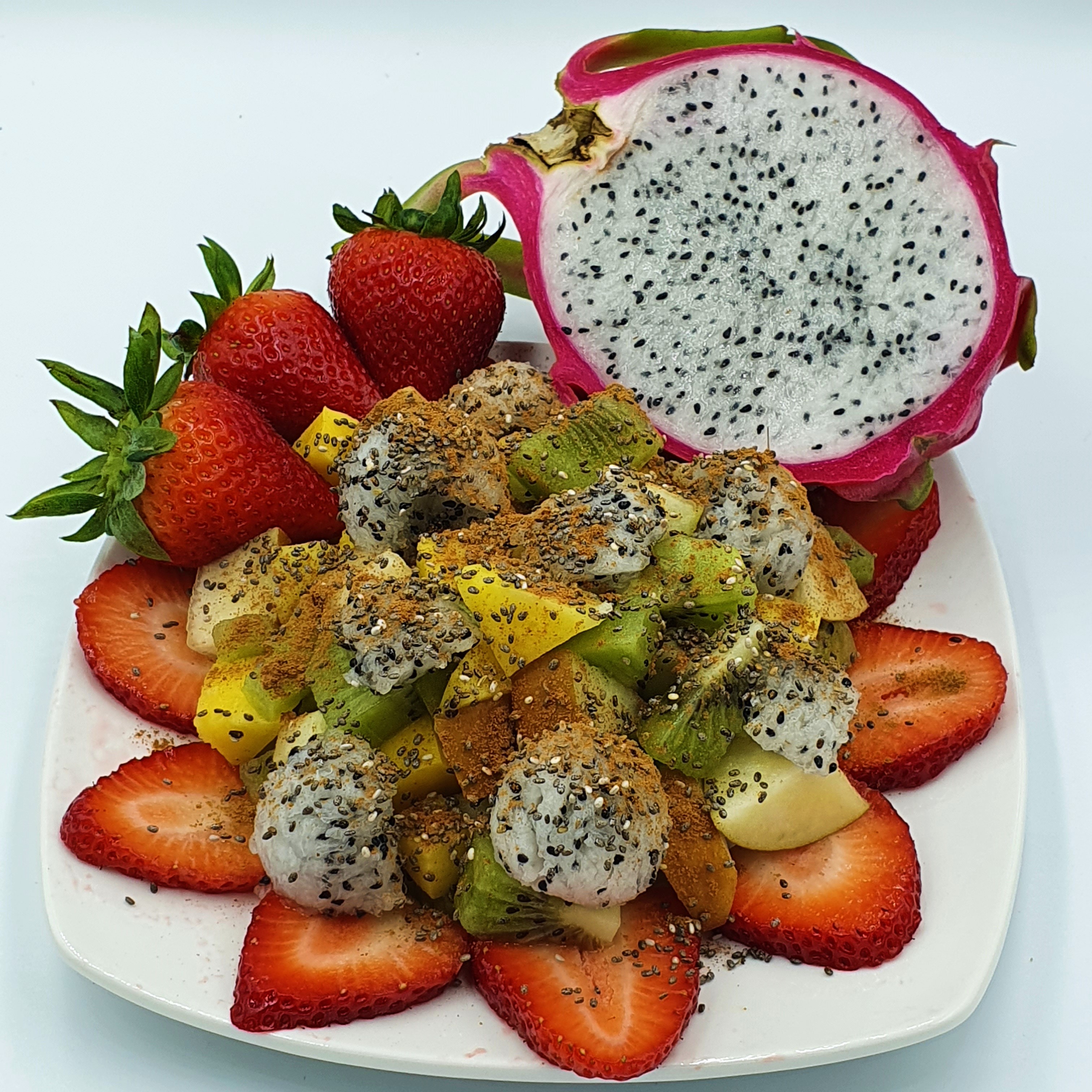Pitaya (Dragon Fruit) for good gut bacteria
November 25th, 2021
Have you even seen a hot pink (or even yellow), fruit that looks like it has flames for leaves around it? This my friends, is Pitaya or Dragon Fruit. Inside you will find beautiful white or pink flesh with small black seeds spotted through-out, with a sweet, refreshing and tropical taste. The pitaya is part of the cactus family and one of its places of origin is from south Mexico.
This fruit not only looks and tastes interesting, it also has some pretty interesting facts when it comes to its health benefits – in particular our gut. Gut bacteria or as it is scientifically known, gut microbiota, are living microorganisms which include bacteria and fungi that live in your digestive tract and can play an important role in the health of your body.
The large intestine or colon is the organ that contains the highest density of microbiomes of any place on earth, being home to 100 trillion microorganisms, and containing between 300-1000 different species. This gut bacteria can make up to 60% of the dry density of your bowel evacuations, wow!
Even more interesting is that these microbes found in your gut can have more than 100 times as many genes as there are in the human genome! While not all of the gut microbes are good, there is a community of living bacteria in your gut known as probiotics, that can be very beneficial for your health. Their main roles include defending against invaders, maintaining the intestinal wall integrity, metabolizing some foods for better nutrient absorption and use, with new research emerging on the role in immune system function, reducing weight and even improving your mood!
When it comes to pitaya, this fruit contains a high amount of pre-biotics, which are a specific type of soluble fiber that acts as food that feeds the healthy bacteria – pro-biotics in your gut. Having more pre-biotics in your diet will improve the balance of good to bad bacteria found in your gut and strengthen immune function and bowel regularity. In particular, pitaya encourages the growth of the pro-biotics lactobacilli and bifidobacteria. These strains of bacteria are useful to kill disease causing viruses and bacteria in the body, as well as aiding in food digestion, and acting as a natural laxative.
Furthermore, pitaya is high in insoluble fiber, containing 7 grams for a one cup serving, which goes a long way towards the 25-38grams recommended per day. Unlike soluble fiber, this insoluble fiber cannot be broken down by the body, however your gut bacteria can digest them and use them as a fuel for growth.
So how do you know how to pick the best pitaya? As with many fruit, the riper the fruit the better the taste and nutrient content. Look for a pitaya that is bright red (or bright yellow for the other variety), with very little to no green areas. Watch for too many soft spots or browned areas as this can indicate that it is overripe. Similar to when choosing an avocado, a pitaya should be soft but not mushy. When using the pitaya, it is best to scoop out the flesh from the thick skin.

PITAYA DIGESTIVE FRUIT BOWL
Serves 2
1 large pitaya
½ mango
1 kiwi fruit
1 cup fresh strawberries
1 pear
1 cup acidophilus yoghurt (Optional)
1 teaspoon chia seeds
Pinch of cinnamon
Chop the mango, kiwi fruit, and pear into bite-sized pieces and mix in a bowl.
Slice the strawberries in half and place on top of the other fruit.
Using a teaspoon, scoop out small spoons of the pitaya and arrange on top of all of the fruit.
Push the fruit to one side of the serving bowl and scoop in the acidophilus yogurt or your choice.
Sprinkle with a topping of chia seeds and cinnamon, enjoy this gut friendly breakfast or snack!
